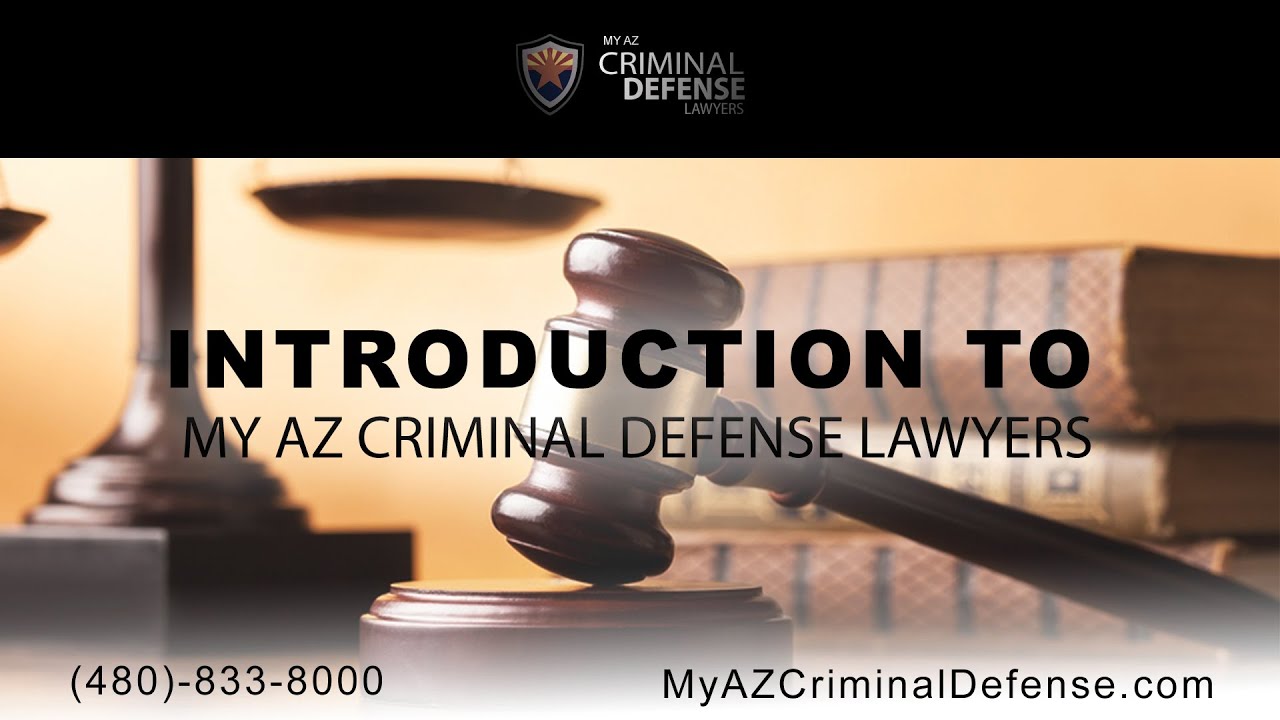Car Accident Basics
Accidents involving cars are an unfortunate reality of life, with millions occurring each year in the United States alone. The consequences of these collisions can range from minor fender benders to catastrophic events that can alter lives irrevocably. Understanding the basics of car accidents is crucial for all drivers to navigate the complexities of getting behind the wheel.
Causes of Car Accidents
The causes of car accidents are varied and complex, with multiple factors often interacting to create a perfect storm for collision.
Driver Error is the leading cause of car accidents, contributing to 94% of all crashes, according to the National Highway Traffic Safety Administration (NHTSA). This includes factors such as distracted driving, speeding, impaired driving, and aggressive driving.
Environmental Factors, such as bad weather, poor visibility, and road conditions can play a part in accidents, accounting for an estimated 13% of all crashes. Weather-related accidents are particularly common during the winter months when snow and ice make driving hazardous.
Vehicle Defects, while less common, can also be a contributing factor in car accidents. These can include mechanical failures such as brake or tire problems, as well as design flaws that increase the risk of rollover or other types of accidents.
Types of Car Accidents
Car accidents come in a variety of forms, with each type presenting different risks and consequences.
Rear-end Collisions are the most common type of car accident, accounting for over 25% of all crashes. They occur when one vehicle strikes the back of another vehicle in front of it.
Side-Impact Collisions, also known as T-bone accidents, occur when one vehicle strikes the side of another vehicle. These accidents can be particularly dangerous as they can result in serious injuries to the occupants of the struck vehicle.
Head-on Collisions occur when two vehicles traveling in opposite directions collide head-to-head. These accidents are among the most severe and are often fatal.
Consequences of Car Accidents
Accidents for car can have wide-ranging consequences, affecting not only the individuals involved but also their families, communities, and the economy as a whole.
Physical Injuries
The most immediate and obvious consequence of a car accident is physical injury. The severity of these injuries can vary from minor bruises and cuts to life-threatening trauma. The most common types of injuries sustained in car accidents include head injuries, spinal cord injuries, broken bones, and internal bleeding.
Emotional Trauma
In addition to physical injuries, car accidents can also have a significant emotional impact on the victims. They may experience anxiety, depression, post-traumatic stress disorder (PTSD), and other psychological issues. These emotional effects can last for weeks, months, or even years after the accident.
Financial Costs
Car accidents can also have a substantial financial impact on the victims. The costs of medical care, property damage, and lost wages can add up quickly. In severe cases, the financial burden can be overwhelming and can lead to financial ruin.
Legal Implications
Depending on the circumstances of the accident, there may be legal implications for the drivers involved. This could include traffic violations, criminal charges, and civil lawsuits.
Car Accidents: What You Need to Know
Picture this: you’re driving down a busy road, minding your own business, when suddenly—BAM! A car careens into you, sending glass and metal flying. In that moment, everything changes. You’re left dazed, confused, and in pain.
So, what happened? How did this seemingly innocuous trip turn into a nightmare? The answer lies in the common causes of car accidents. Knowing these causes can help you avoid them and stay safe on the road.
Common Causes of Car Accidents
Car accidents can happen for a multitude of reasons, but some of the most common include:
- Speeding: When you’re speeding, you have less time to react to hazards, and your car takes longer to stop. This can lead to devastating consequences, especially if you’re driving in a congested area.
- Distracted driving: Anything that takes your attention away from the road can be considered distracted driving. This includes talking on the phone, texting, eating, or even adjusting the radio. Even a moment of inattention can be enough to cause an accident.
- Drunk Driving: One of the most dangerous things you can do is get behind the wheel after drinking alcohol. Alcohol impairs your judgment, reaction time, and coordination, making you a danger to yourself and others. Even a small amount of alcohol can significantly increase your risk of having an accident.
Beyond the Basics: A Deeper Dive into Distracted Driving
Distracted driving is a major problem on our roads today. In fact, it’s estimated that over 3,000 people were killed in distracted driving crashes in 2020 alone.
There are many different types of distracted driving, but they all have one thing in common: they take your attention away from the road. This can happen in a variety of ways, such as:
- Talking on the phone or texting: These activities are especially dangerous because they require you to take your eyes off the road and your hands off the wheel.
- Eating or drinking: Eating or drinking while driving can be distracting because it can take your attention away from the road and make it difficult to keep your hands on the wheel.
- Adjusting the radio or GPS: Even a quick glance at the radio or GPS can be enough to cause an accident.
- Talking to passengers: Talking to passengers can be distracting because it can take your attention away from the road and make it difficult to concentrate on driving.
If you’re caught driving while distracted, you could face serious consequences, including fines, jail time, and even the loss of your license. More importantly, you could put your life and the lives of others at risk.
Avoiding Distractions and Staying Safe
The best way to avoid distracted driving is to simply put away your phone and other distractions while you’re driving. This means no talking on the phone, texting, eating, drinking, or adjusting the radio. If you need to do something that will take your attention away from the road, pull over to a safe place first.
It’s also important to be aware of the distractions around you. If you’re driving in a congested area, be extra cautious and avoid distractions like billboards, construction zones, and other drivers.
By following these tips, you can help reduce your risk of being involved in a car accident. Drive safely and stay alert!
Car Accidents: A Guide to Understanding Types and Impact
Accidents involving cars are an unfortunate reality on our roads today. Understanding the different types of car accidents can help us better comprehend their causes and consequences, and take necessary precautions to avoid or mitigate their impact.
Types of Car Accidents
Car accidents can be broadly classified based on their severity and the nature of the impact. Some common types include:
**1. Rear-end Collisions:** These occur when a vehicle slams into the back of another vehicle, often due to distracted driving or tailgating. Rear-end collisions can range in severity from minor fender benders to catastrophic pile-ups.
**2. Head-on Collisions:** Head-on collisions happen when two vehicles traveling in opposite directions collide head-to-head. They are among the most severe types of accidents and often result in serious injuries or fatalities.
**3. Rollovers:** Rollovers occur when a vehicle loses control and overturns. They can be caused by a variety of factors, including high speeds, aggressive driving, or uneven road conditions. Rollovers pose a significant risk of occupant ejection and severe injuries to the head, neck, and spine.
**4. T-bone Collisions:** In a T-bone collision, one vehicle strikes the side of another vehicle, forming a T-shape. These accidents often occur at intersections when one driver fails to yield or runs a red light.
**5. Sideswipe Collisions:** Sideswipe collisions happen when two vehicles traveling parallel to each other collide with their sides. They can result from lane changes, merging, or careless driving.**
The Grim Reality of Car Accidents
Car accidents are an unfortunate reality for many drivers. The impact can be far-reaching, leaving victims with a myriad of consequences that can linger long after the initial collision. Physical injuries, emotional trauma, and financial burdens are just a few of the challenges that accident victims face.
Physical Consequences: The Body’s Battles
Car accidents can inflict a wide range of physical injuries, from minor cuts and bruises to severe fractures and head trauma. Broken bones, whiplash, and internal bleeding are common consequences of these collisions. Victims may require extensive medical treatment, rehabilitation, and ongoing care to recover from their injuries. The physical consequences of car accidents can disrupt daily life, impair mobility, and leave lasting scars.
Emotional Consequences: Invisible Wounds
The emotional toll of car accidents can be just as devastating as the physical injuries. Victims may experience anxiety, depression, and post-traumatic stress disorder (PTSD). These conditions can lead to difficulties with sleep, concentration, and relationships. The fear of driving or being in a vehicle again can become a significant obstacle for accident survivors. The emotional consequences of car accidents can take a heavy toll on victims’ mental health and overall well-being.
Financial Consequences: The Price of the Impact
Car accidents can result in substantial financial losses for victims. Property damage, medical expenses, and lost wages can quickly add up. Victims may have to deal with insurance companies, legal fees, and the financial burden of ongoing treatments. The financial consequences of car accidents can create significant financial strain and put victims in a difficult position. These costs can impact their ability to support themselves and their families, making recovery even more challenging.
Legal Consequences: Navigating the Maze
In some cases, car accidents can lead to legal liabilities. If a driver is found to be at fault for an accident, they may be held responsible for damages and injuries to other parties involved. This can result in lawsuits, settlements, and even criminal charges. The legal consequences of car accidents can add further stress and financial burden to victims, complicating their recovery process.
Accident for Car: Essential Steps to Take After a Collision
In the aftermath of an accident for car, the initial moments are crucial. Amidst the confusion and potential injuries, it’s essential to remain composed and take the necessary steps to protect yourself and others involved. From exchanging information to seeking medical attention, these guidelines will help you navigate the aftermath of a car accident:
Steps to Take After a Car Accident
1. Ensure Safety: First and foremost, make sure you and any passengers are safe. Check for injuries and move to a safe location off the road if possible. If you see any other individuals injured, call for emergency services immediately.
2. Exchange Information: Stay calm and exchange information with the other drivers involved. This includes names, addresses, phone numbers, insurance company information, and license plate numbers. It’s crucial to record as much information as possible.
3. Contact the Police: Report the accident to the police, even if it’s a minor one. A police report can provide an official record of what happened and help with insurance claims.
4. Document the Scene: Take pictures of the damage to your car and any other vehicles involved. Capture the surrounding area and any injuries sustained. These photos can be valuable evidence later.
5. Seek Medical Attention: Even if you feel uninjured, it’s crucial to seek medical attention as soon as possible. Some injuries, such as whiplash, may not show up immediately. Early diagnosis and treatment can prevent long-term complications. Don’t try to “tough it out.” It’s always better to get checked out by a professional.
5.1 Whiplash: This is a common injury that occurs when your head is suddenly snapped back and forth in a car crash. Symptoms may not appear right away, so it’s important to be checked by a doctor, even if you don’t feel any pain.
5.2 Concussions: A concussion is a brain injury that can be caused by a blow to the head. Symptoms can include headache, nausea, dizziness, and confusion. Seek medical attention immediately if you suspect you have a concussion.
5.3 Broken Bones: Broken bones can be caused by the impact of a car crash. Symptoms can include pain, swelling, and bruising. If you think you have a broken bone, do not try to move it. Immobilize the area and seek medical attention immediately.
5.4 Internal Bleeding: Internal bleeding can be caused by blunt force trauma to the body. Symptoms can include pain, swelling, and bruising. If you have any of these symptoms, seek medical attention immediately.
5.5 Seek Compensation: If you have been injured in a car accident, you may be entitled to compensation for your injuries. Talk to an attorney to discuss your options.
6. Report the Accident to Your Insurance Company: Contact your insurance company and report the accident as soon as possible. They can provide guidance on how to file a claim and help you understand your coverage.
7. Stay Calm: It’s understandable to feel shaken up after a car accident. Try to stay calm and focus on taking the necessary steps to protect yourself and others.
By following these steps, you can help ensure your safety and well-being after an accident for car. Remember, it’s always better to be safe than sorry.
The Aftermath of an Accident: Navigating the Legal Labyrinth
Like a scene from a slow-motion disaster movie, the aftermath of a car accident can unfold in a haze of confusion and uncertainty. The screeching of metal, the jarring impact, and the ensuing chaos can leave you shaken and disoriented. Beyond the physical toll, car accidents also bring a slew of legal considerations that can be daunting to navigate.
Insurance Ins and Outs
Insurance plays a pivotal role in car accident settlements. It’s a double-edged sword: a safety net offering protection, yet a potential source of conflict if claims aren’t handled fairly. Understanding your insurance coverage, as well as the coverage of other drivers involved, is crucial to ensure you receive the compensation you deserve.
Fault Determination: A Tangled Web
Pinpointing fault in a car accident isn’t always a clear-cut case. It’s not just about who hit whom; various factors come into play, including traffic violations, road conditions, and even the actions of pedestrians or other vehicles. Law enforcement officers at the scene will determine preliminary fault, but insurance companies and courts may delve deeper into the circumstances to assign liability.
Compensation: Seeking Justice or a Fair Deal?
When an accident leaves you injured, seeking compensation is often necessary to cover medical expenses, lost wages, and other damages. The amount of compensation you receive will depend on the severity of your injuries, the extent of your insurance coverage, and the legal strategy employed. Whether you choose to negotiate with insurance companies or pursue a lawsuit, understanding your rights and options is paramount.
Legal Representation: The Power of an Advocate
Navigating the legal complexities of a car accident can be overwhelming. An experienced attorney can serve as your voice, guiding you through the process and advocating for your best interests. They can negotiate with insurance companies, prepare and file legal documents, and represent you in court if necessary.
Protecting Your Rights: Don’t Fall Into the Trap
Time is of the essence in car accident cases. Don’t be tempted to settle quickly or sign documents without fully understanding your rights. Insurance companies are businesses, and their primary goal is to minimize their payouts. It’s crucial to consult with an attorney before making any decisions that could jeopardize your claim.
Moving Forward: Lessons Learned and Legal Loopholes
Car accidents can leave a lasting impact on your life. The legal process can be arduous, but it’s also an opportunity to seek justice and closure. By understanding the legal considerations involved, you can navigate the aftermath with greater confidence and ensure your rights are protected.
A Costly Accident
AUSTIN, Texas – Car accidents are a leading cause of death and serious injury around the world. In the United States alone, over 6 million car accidents occur each year, resulting in hundreds of thousands of deaths and injuries. While some car accidents are unavoidable, many of them could be prevented with a little extra care and attention.
Preventing Car Accidents
Taking precautions and being alert can greatly reduce the chances of being involved in a car accident. Here are some effective things you can do to prevent car accidents:
1. Practice Safe Driving Habits
Speeding, reckless driving, and aggressive driving are all major contributing factors to car accidents. Obey speed limits, don’t drive under the influence of alcohol or drugs, and always be aware of your surroundings.
2. Maintain Your Vehicle Regularly
Regular maintenance can help prevent mechanical problems that could lead to an accident. Make sure your tires are properly inflated, your brakes are in good working order, and your vehicle is up-to-date on all recommended maintenance.
3. Avoid Distractions
Distracted driving is one of the leading causes of car accidents. Avoid using your cell phone, texting, eating, or anything else that could take your attention away from driving.
4. Wear Your Seat Belt
Wearing a seat belt can dramatically reduce your risk of injury or death in the event of an accident. Make sure you and all of your passengers buckle up every time you get in the car.
5. Drive Defensively
Be aware of other drivers around you and anticipate their actions. If you see a car driving erratically, give them plenty of space and be prepared to take evasive action.
6. Be Aware of Your Surroundings
Pay attention to the road conditions, the weather, and other factors that could affect your driving. If you’re driving in bad weather, slow down and be extra cautious.
7. Get Enough Sleep
Drowsy driving is a serious problem that can lead to car accidents. Make sure you get plenty of sleep before you get behind the wheel.
8. Avoid Driving Under the Influence of Alcohol or Drugs
Alcohol and drugs can impair your judgment and reaction time, making you more likely to be involved in an accident. Never drive under the influence of these substances.
By following these tips, you can greatly reduce your risk of being involved in a car accident. Remember, safe driving is not just about protecting yourself; it’s about protecting others on the road too.




Leave a Reply